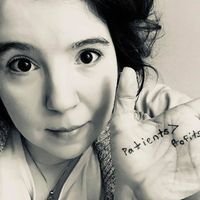Search the Community
Showing results for '"Weight gain"'.
Found 15,863 results
-


I think 30 is a great time to be sleeved!
jessieg9783 replied to Lorie315's topic in Gastric Sleeve Surgery Forums
I have dieted off and on most of my adult life!! And if anyone would ask me if they should do it I would say go with your heart!! Do what you feel is right even if others don't!! But I agree I was just a few months from turning 30, but I say that it was a great time, I was done having kids, didn't have to worry about the weight gain there. But anyway long story short lol YES IT IS!! -
http://mcgs.bcbsfl.com/ Note the timeline on this: 02-40000-10 Original Effective Date: 10/15/99 Reviewed: 04/27/06 Revised: 05/15/06 Next Review: 04/26/07 Subject: Surgery for Clinically Severe Obesity (Bariatric Surgery; Gastric Bypass Surgery) DESCRIPTION: Clinically severe obesity is a result of persistent and uncontrollable weight gain that constitutes a present or potential threat to life. For purposes of this medical coverage guideline, clinically severe obesity is defined as a body mass index (BMI) of 35 kg/m2 or greater. See the height and weight tables for Men and Woman, BMI tables (100-195, 200-295, 300-400, and formula for calculating a BMI. Several surgical (bariatric) procedures are used for the treatment of clinically severe obesity. These procedures can be categorized as follows: <LI class=bulletedList-1>Malabsorptive procedures - alteration of the intestinal absorption limiting nutrients available to the body OR Gastric restrictive procedures - reduction in the capacity of the stomach thereby limiting the amount of food ingested. Gastric surgical procedures for the treatment of clinically severe obesity include: <LI class=bulletedList-1>gastric bypass where approximately 90% of the stomach is bypassed and reattached to the proximal jejunum OR gastric stapling, vertically banded gastric partition, or vertically banded gastroplasty where a proximal pouch of 30-60 ml and a one centimeter outlet are created by a row of vertical staples and a horizontally placed reinforcing band. WHEN SERVICES ARE COVERED: Effective January 1 2005, weight loss surgery is not covered for most contracts. Please refer to the individual member’s contract benefit language. NOTE: The primary care physician must provide a letter with facts supporting medical necessity, for review by the Medical Director. Certain surgical procedures performed for the treatment of clinically severe obesity may be considered medically necessary when ALL of the following conditions are met: The member: <LI class=bulletedList-1>meets the above definition of clinically severe obesity, <LI class=bulletedList-1>has been severely obese for at least five (5) years, <LI class=bulletedList-1>has attempted a physician supervised (by the primary care physician) non-surgical management weight loss program (e.g., diet, exercise, drugs) for six (6) consecutive months <LI class=bulletedList-1>has received psychological or psychiatric evaluation with counseling as needed, prior to surgical intervention; does not have a medically treatable cause for the obesity, (e.g., thyroid or other endocrine disorder). The following procedures may be considered medically necessary when the above criteria has been met: Vertical-Banded Gastroplasty (CPT code 43842) Vertical-banded gastroplasty was formerly one of the most common gastric restrictive procedures performed in this country but has more recently declined in popularity. In this procedure, the stomach is segmented along its vertical axis. To create a durable reinforced and rate-limiting stoma at the distal end of the pouch, a plug of stomach is removed, and a propylene collar is placed through this hole and then stapled to itself. Because the normal flow of food is preserved, metabolic complications are uncommon. Complications include esophageal reflux, dilation, or obstruction of the stoma, with the latter 2 requiring reoperation. Dilation of the stoma is a common reason for weight regain. Vertical-banded gastroplasty may be performed using an open or laparoscopic approach. Roux-en-Y Gastric Bypass (CPT code 43644, 43846) Gastric bypass may be performed with either an open or laparoscopic technique. The original gastric bypass surgeries were based on the observation that post-gastrectomy patients tended to lose weight. The current procedure involves a horizontal or vertical partition of the stomach in association with a Roux-en-Y procedure (i.e., a gastrojejunal anastomosis). Thus, the flow of food bypasses the duodenum and proximal small bowel. The procedure may also be associated with an unpleasant “dumping syndrome,” in which a large osmotic load delivered directly to the jejunum from the stomach produces abdominal pain OR vomiting. The dumping syndrome may further reduce intake, particularly in “sweets eaters”. Operative complications include leakage and marginal ulceration at the anastomotic site. Because the normal flow of food is disrupted, there are more metabolic complications compared to other gastric restrictive procedures. These complications may include iron deficiency anemia, vitamin B-12 deficiency, and hypocalcemia, all of which can be corrected by oral supplementation. Another concern is the ability to evaluate the “blind” bypassed portion of the stomach. Long Limb Gastric Bypass (i.e., more than 100 cm) (CPT code 43847) Recently, variations of gastric bypass procedures have been described, consisting primarily of long limb Roux-en-Y procedures, which vary in the length of the alimentary and common limbs. For example, the stomach may be divided with a long segment of the jejunum (instead of ileum) anastomosed to the proximal gastric stump, creating the alimentary limb. The remaining pancreaticobiliary limb, consisting of stomach remnant, duodenum, and length of proximal jejunum is then anastomosed to the ileum, creating a common limb of variable length in which the ingested food mixes with the pancreaticobiliary juices. While the long alimentary limb permits absorption of most nutrients, the short common limb primarily limits absorption of fats. The stomach may be bypassed in a variety of ways (i.e., either by resection or stapling along the horizontal or vertical axis). Unlike the traditional gastric bypass, which is essentially a gastric restrictive procedure, these very long limb Roux-en-Y gastric bypasses combine gastric restriction with some element of malabsorptive procedure, depending on the location of the anastomoses. NOTE: Coverage of long limb Roux-en-Y procedures is limited to 150 cm. Adjustable gastric banding (i.e., Lap-Band Adjustable Gastric Banding System) (CPT code 43770, 43771, 43772, 43773, 43774) Adjustable gastric banding involves placing a gastric band around the exterior of the stomach. The band is attached to a reservoir that is implanted subcutaneously in the rectus sheath. Injecting the reservoir with saline will alter the diameter of the gastric band; therefore, the rate- limiting stoma in the stomach can be progressively narrowed to induce greater weight loss, or expanded if complications develop. Because the stomach is not entered, the surgery and any revisions, if necessary, are relatively simple. Complications include slippage of the external band or band erosion through the gastric wall. Adjustable gastric banding has been widely used in Europe. Currently, the U.S. Food and Drug Administration (FDA) has approved one such device for marketing in the United States, Lap-Band (BioEnterics, Carpentiera, CA). The labeled indications for this device are as follows: "The Lap-Band system is indicated for use in weight reduction for severely obese patients with a body mass index (BMI) of at least 40 or a BMI of at least 35 with one or more severe comorbid conditions, or those who are 100 lbs or more over their estimated ideal weight according to the 1983 Metropolitan Life Insurance Tables (use the midpoint for medium frame). It is indicated for use only in severely obese adult patients who have failed more conservative weight-reduction alternatives, such as supervised diet, exercise and behavior modification programs. Patients who elect to have this surgery must make the commitment to accept significant changes in their eating habits for the rest of their lives." Biliopancreatic Bypass with Duodenal Switch (43845) The duodenal switch procedure is essentially a variant of the biliopancreatic bypass. However, instead of performing a distal gastrectomy, a “sleeve” gastrectomy is performed along the vertical axis of the stomach, preserving the pylorus and initial segment of the duodenum, which is then anastomosed to a segment of the ileum, similar to the above procedure, to create the alimentary limb. Preservation of the pyloric sphincter is designed to be more physiologic. The sleeve gastrectomy decreases the volume of the stomach and also decreases the parietal cell mass, with the intent of decreasing the incidence of ulcers at the duodenoileal anastomosis. However, the basic principle of the procedure is similar to that of the biliopancreatic bypass (i.e., producing selective malabsorption by limiting the food digestion and absorption to a short common ileal segment). WHEN SERVICES ARE NOT COVERED: Surgery for clinically severe obesity is not covered when these services are excluded from the member’s contract benefits. Studies are needed to determine the long-term health outcomes of the following procedures, therefore the procedures listed below are considered investigational when performed for the treatment of clinically severe obesity: Biliopancreatic Bypass Procedure (i.e., the Scopinaro procedure) (CPT code 43847) Biliopancreatic bypass (BPB) procedure, developed and used extensively in Italy, was designed to address some of the drawbacks of the original intestinal bypass procedures that have been abandoned due to unacceptable metabolic complications. Many of the complications were thought to be related to bacterial overgrowth and toxin production in the blind, bypassed segment. In contrast, BPB consists of a subtotal gastrectomy and diversion of the biliopancreatic juices into the distal ileum by a long Roux-en-Y procedure. This procedure consists of the following components: <LI class=bulletedList-1>A distal gastrectomy functions to induce a temporary early satiety OR the dumping syndrome in the early postoperative period, both of which limit food intake <LI class=bulletedList-1>A 200-cm long “alimentary tract” consists of 200 cm of ileum connecting the stomach to a common distal segment <LI class=bulletedList-1>A 300- to 400-cm “biliary tract,” which connects the duodenum, jejunum, and remaining ileum to the common distal segment <LI class=bulletedList-1>A 50- to 100-cm “common tract,” where food from the alimentary tract mixes with biliopancreatic juices from the biliary tract. Food digestion and absorption, particularly of fats and starches, are therefore limited to this small segment of bowel (i.e., creating a selective malabsorption). The length of the common segment will influence the degree of malabsorption Because of the high incidence of cholelithiasis associated with the procedure, patients typically undergo an associated cholecystectomy. Many potential metabolic complications are related to biliopancreatic bypass, including most prominently iron deficiency anemia, protein malnutrition, hypocalcemia, and bone demineralization. Protein malnutrition may require treatment with total parenteral nutrition (TPN). In addition, there have been several case reports of liver failure resulting in death or liver transplant. Mini-Gastric Bypass (no specific CPT code) Recently, a variant of the gastric bypass, called the “mini-gastric bypass” has been popularized. Using a laparoscopic approach, the stomach is segmented, similar to a traditional gastric bypass, but instead of creating a Roux-en-Y anastomosis, the jejunum is anastomosed directly to the stomach, similar to a Billroth II procedure. This unique aspect of this procedure is not based on its laparoscopic approach, but rather the type of anastomosis used. NOTE: CPT code 43846 does not accurately describe the mini-gastric bypass, since this CPT code explicitly describes a Roux-en-Y gastroenterostomy, which is not used in the mini-gastric bypass. The following procedures reported as gastric bypass or gastroplasty are also considered investigational due to the lack of clinical studies to support effects on health outcomes: <LI class=bulletedList-1>jejunoileal bypass <LI class=bulletedList-1>gastric wrapping Garren-Edwards gastric bubble. BILLING/CODING INFORMATION: CPT Coding: 43644 Laparoscopy, surgical, gastric restrictive procedure; with gastric bypass and Roux-en-Y gastroenterostomy (Roux limb 150 cm or less) 43645 Laparoscopy, surgical, gastric restrictive procedure; with gastric bypass and small intestine reconstruction to limit absorption (investigational) 43770 Laparoscopy, surgical, gastric restrictive procedure; placement of adjustable gastric band (gastric band and subcutaneous port components) 43771 Laparoscopy, surgical, gastric restrictive procedure; revision of adjustable gastric band component only 43772 Laparoscopy, surgical, gastric restrictive procedure; removal and replacement of adjustable gastric band component only 43773 Laparoscopy, surgical, gastric restrictive procedure; removal and replacement of adjustable gastric band component only 43774 Laparoscopy, surgical, gastric restrictive procedure; removal of adjustable gastric band and subcutaneous port components 43842 Gastric restrictive procedure, without gastric bypass, for morbid obesity; vertical-banded gastroplasty 43843 Gastric restrictive procedure, without gastric bypass, for morbid obesity; other than vertical-banded gastroplasty (investigational) 43845 Gastric restrictive procedure with partial gastrectomy, pylorus-preserving duodenoileostomy and ileoileostomy (50 to 100 cm common channel) to limit absorption (biliopancreatic diversion with duodenal switch) 43846 Gastric restrictive procedure, with gastric bypass for morbid obesity; with short limb (150 cm or less) Roux-en-Y gastroenterostomy (may be done laparoscopically) 43847 Gastric restrictive procedure, with gastric bypass for morbid obesity; with small intestine reconstruction to limit absorption (may be done laparoscopically) There is no specific CPT or HCPCS code to report mini gastric bypass. A laparoscopic approach is used with the mini-gastric bypass. The stomach is segmented similar to a traditional gastric bypass; the jejunum is anastomosed directly to the stomach, similar to a Billroth II procedure. The mini gastric bypass is not based on its laparoscopic approach, but rather the type of anastomosis used. HCPCS Coding S2083 Adjustment of gastric band diameter via subcutaneous port by injection or aspiration of saline ICD-9 Diagnoses Codes That Support Medical Necessity: 278.01 Morbid obesity REIMBURSEMENT INFORMATION: Bariatric surgical procedures are limited to individuals 18 years and older and are reimbursed based on the procedure performed and not the surgical technique used (e.g., microsurgical, laser, laparoscopic). PROGRAM EXCEPTIONS: Federal Employee Program (FEP): Follow FEP guidelines. State Account Organization (SAO): Follow SAO guidelines. DEFINITIONS: Biliopancreatic bypass: gastric restriction rerouting bile and pancreatic juice to the distal ileum. Garren-Edwards gastric bubble: a free-floating intragastric device made of elastomeric plastic is placed in the stomach via a gastroscope, used for reducing stomach capacity. Gastric wrapping: the stomach is folded over on itself and a full stomach wrap, i.e. polypropylene mesh, is applied to limit gastric volume. Gastric banding: a synthetic band rather than staples is used to divide the stomach into a small upper pouch and a lower portion). Gastric bubble: see definition of Garren-Edwards gastric bubble. Jejunoileal bypass: shunts food from the jejunum into the ileum, bypassing the small intestine. Morbid obesity: defined as a body mass index (BMI) of 40 kg/m2 or greater. Satiety: the quality or state of being fed or gratified to or beyond capacity. RELATED GUIDELINES: Gastric Bypass Revision, 02-40000-11 OTHER: Other index terms for gastric surgery: Adjustable gastric banding Bariatric surgery Gastric bypass surgery Lap-Band System Mini gastric bypass Billroth II Long limb gastric bypass Roux-en-Y Scopinaro Vertical banding REFERENCES: <LI value=1>All-plan survey (Blue Cross Blue Shield plans) <LI value=2>American Academy of Medicine CPT Coding (current edition) <LI value=3>Blue Cross Blue Shield Association TEC Evaluation (12/88), 2003 <LI value=4>Blue Cross Blue Shield Association TEC Special Report: The relationship between weight loss and changes in morbidity following bariatric surgery for morbid obesity. BCBSA TEC Assessment Program, 2003; 18:1-25 <LI value=5>Blue Cross Blue Shield Association-Surgery for Morbid Obesity (7.01.47), 12/14/05 <LI value=6>DeMaria, E J, Sugerman, H J, Meador, J G, et al. High Failure Rate After Laparoscopic Adjustable Silicone Gastric Banding for Treatment of Morbid Obesity. Annals of Surgery 2001:233:809-818 <LI value=7>First Coast Service Options (FCSO) Medical Policy - surgical Management of Morbid Obesity, LCD #L14600 (01/01/06) <LI value=8>Guidance for Treatment of Adult Obesity, American Obesity Assoc., 1998 <LI value=9>Hayes Medical Technology Directory - Laproscopic Bariatric Surgery - us.lapa0008.2005 (11/03; Update report 12/05) <LI value=10>Hayes Medical Technology Directory - Obesity Management, Surgical Approaches OBES0802.03 (10/99; updated 07/27/02; updated 04/04/03) <LI value=11>InterQual Care Planning Criteria: General Surgery; Weight Loss Surgery GS-23 (2003) <LI value=12>National Institutes of Health Consensus Development Conference on Gastrointestinal Surgery for Severe Obesity Statement (March 25-27, 1991) <LI value=13>Rutledge MD, Robert. “The Mini-Gastric Bypass: Experience with the First 1,274 Cases”; Obesity Surgery 2001; 11:276-280 <LI value=14>St. Anthony’s ICD-9-CM code book (current edition) U.S. Food and Administration (FDA) Talk Paper, FDA Approves Implanted Stomach Band To Treat Severe Obesity, T01-26, 06/05/01 COMMITTEE APPROVAL: This Medical Coverage Guideline (MCG) was approved by the BCBSF Medical Policy & Coverage Committee on 04/27/06. GUIDELINE UPDATE INFORMATION: 10/15/99 Medical Coverage Guideline developed. 09/15/01 Various revisions. 01/01/02 Coding changes. 10/15/02 Annual review. Added Roux-enY anastomosis or vertical-banded as covered services. Added biliopancreatic bypass with duodenal switch and very long limb gastric bypass procedure (e.g., greater than 100 cm) as non-covered services. 05/15/03 Revised to clarify coding of the various procedures; criteria revised and is consistent with Inter-Qual criteria. 09/15/03 Coverage criteria for psychological testing/counseling revised. 10/15/03 Reversed investigational status for CPT code 43847 and provided coverage criteria for long-limb Roux-en-Y procedures up to 150 cm. 01/01/04 Annual HCPCS coding update. 04/01/04 2nd Quarter HCPCS coding update; added S2082 and S2083. 07/15/04 Scheduled review; no changes. 01/01/05 HCPCS coding update. Added 43644, 43645, 43845, S2082, and S2083. Revised descriptor for 43846, and deleted S2085. 05/15/05 Unscheduled review of the non-covered statement for laparoscopic adjustable gastric banding (Lap-Band); coverage statement unchanged. 01/01/06 Annual HCPCS coding update (added 43770-43774; deleted S2082). 04/15/06 Scheduled review; removed investigational statement for laparoscopic adjustable gastric banding and biliopancreatic diversion with duodenal switch; updated coding, index terms, and references. 05/15/06 Scheduled review; removed investigational statement for laparoscopic adjustable gastric banding and biliopancreatic diversion with duodenal switch; updated coding, index terms, and references; added age limitation of 18 years and older. Private Property of Blue Cross and Blue Shield of Florida. This medical coverage guideline is Copyright 2006, Blue Cross and Blue Shield of Florida (BCBSF). All Rights Reserved. You may not copy or use this document or disclose its contents without the express written permission of BCBSF. The medical codes referenced in this document may be proprietary and owned by others. BCBSF makes no claim of ownership of such codes. Our use of such codes in this document is for explanation and guidance and should not be construed as a license for their use by you. Before utilizing the codes, please be sure that to the extent required, you have secured any appropriate licenses for such use. Current Procedural Terminology (CPT) is copyright 2006 American Medical Association. All Rights Reserved. No fee schedules, basic units, relative values, or related listings are included in CPT. The AMA assumes no liability for the data contained herein. Applicable FARS/DFARS restrictions apply to government use. CPT® is a trademark of the American Medical Association.
-
Melissa- I have Empire BCBS of NY. I was told by one coordinator that the 6-months diet was mandatory, but by a second coordinator (two days later) that it was not?! I submitted paperwork that listed 5 months and was approved very quickly (2 days). I had an arsenal of met requirements and left nothing to chance. Document EVERYTHING, fax a copy to your surgeon and keep one for yourself. I think my submittal had over 100 pages of "stuff" including: PCP letter personal "mission statement" lol psych eval/support cardiologist suport/EKG/Echo nutritional eval pulmonolgist support/eval apnea study/report endocrinologist report/support letter dr's visits for over 5 years (including thyroid issues, pregnancy...weight gain & loss) gym membership receipt weight watchers "thru the years" I copied & faxed myself silly. My surgeon's office said it was the quickest approval they've see. I suppose my OCDs pay off sometimes. I'm not certain that all I did was necessary....but it was all well worth it. I'm 16 days post-surgery and feel better than I have in YEARS. Best of luck to you!
-
lol -you know those were my thoughts too...i was like until im approved im going to just kick back and go with the flow. of course extra weight gained is extra to lose but still i did it. there's also a class i have to go to before i can have my surgery, the class is on the 20th, lol. i did not want to do a band lifestyle change class until i knew i was getting the band.
-
Week 23 Last week’s weight – 198.4 This week’s weight – 200.8 Total weight gained this week – 2.4 lbs Beginning weight – 246 lbs Total weight loss since surgery – 45.2 lbs Average weekly weight loss since surgery – 1.8 lbs Ugh! I gained 2.4 lbs this week. It is not too surprising. I was gone for the past five days on an anniversary trip with my husband and my eating (and drinking) was way out of whack - plus I didn’t get any strenuous exercise in. I got some exercise in…walking instead of driving in a car but nothing too noteworthy. I also got my period three days ago and I am sure that is not helping. It is a little discouraging to see my weight above 200 again. I missed five days at Crossfit but went last night and this morning (I’m trying to do it at least 3x a week for the first month). I am dog/house sitting for the next 10 days and I am hoping to keep myself on a pretty tight eating/exercising plan during that time just to get back on track. Hoping to report a loss next week.
-
Y'all know how much I HATE to feel feel down. This week, I have not been losing and this morning on my official weigh in day, I was up .6. (At first I thought I was up a whole pound, so I'm not going to get too upset about just over a half!) Anyway, when I think back to why... Exercise: I exercised for a total of 3 hours last week. One hour of Jazzercise, 2 - 30 minute treadmill sessions (couch to 5k), & 60 minutes with my trainer. Not bad, but far from my best. Food: If I am honest with myself, I know that I did not make good food choices this week. I don't think it is about stress or comfort. I think that I'm hungry and I have no will power. The doctor had said that he thought I was close to my sweet spot and might not need another fill for a while, but I think that might not be the case. Typically, I'm not hungry in the mornings. I will usually drink a protein shake in the morning (around 9:30-10:00), not because I'm hungry, but to make sure I'm getting good protein. Today, my stomach was growling (with hunger) by 7:30 AM. I don't want to be so tight that I can't eat, but I do need to be tight enough to curb my hunger more. Punishment: because I have gained weight this week, my punishment is to log my caloric intake. I HATE DOING THIS! I know some people are completely focused on this and I know that it is probably extremely helpful. But I HATE IT. So, it is an effective punishment and motivator to not have to do it again. Interestingly, I seem to do better when I'm away from home. Pre-band, vacations were weight gain guarantees! However, now, it seems to have the opposite effect. I don't snack much and I find time to work out. So...I will track my calories Mon-Wed. If I'm on the right track by end of Wednesday, I won't track my vacation (Thurs-Tues). When I get back, I will have one week until my fill. Now that week includes my birthday...so wish me luck!! Ha! Random question: do you all update your avatar pictures? I know that picture is how people here know me, but it isn't me anymore. Do you all leave them or update them??
-


2 Yrs In The Waiting Finally Banded On 7/25! Not Sure If Everything Is Normal?
djbrn02 replied to 2savemylife's topic in POST-Operation Weight Loss Surgery Q&A
Remembr that you are healing. I had surgery on the 9th and I still get tired at times and have to know when to slow down and even tell myself to stop. As far as the gas it will be there for a while. Walk walk and walk is the best medicine. The pain in the left shoulder lasted about 1 week in a half and that was the worst part of it all. The intake will gradually come just do not get dehydrated. The week after surgery I lost 5 pounds now I fluctuate between 1-2 pounds weight gain over the last two weeks. I think it is time to step up my exercise. At first when walking on the treadmill I would get exhausted. Now I think I can walk a little more. The good thing is I can see a big difference in my clothes. So just hang in there it will get better. -


Band > Sleeve now what?
NeedaBreak4Me replied to Debaria's topic in General Weight Loss Surgery Discussions
I think a 3rd surgery for 6kg is a little drastic.... have you tried going back to basics? Are you tracking your food? Reaching Protein goals? Whats your diet like? In my opinion.... 6kg weight gain in 3 years is not bad at all... you can get rid of that with 2 weeks of following your original pre op diet... -


Band > Sleeve now what?
FrankyG replied to Debaria's topic in General Weight Loss Surgery Discussions
None of the following is meant to sound mean or critical (please don't read it that way - just being honest and trying to hit points you may not have considered or might be in denial about). It's great that you're exercising because it's going to make you feel better overall, but weight gain/loss is 90% food and diet related. My doc said that all people will lose even eating absolute crap for the first year, but they will regain if they don't take the time to throw out all they know about food/eating and relearn how to properly eat healthy and figure out correct (small) portion sizing. Your problem seems to be that you're eating things you shouldn't (simple carbs/sugar) and possibly eating too many calories, and that is causing you to regain (simple carbs and sugar are usually high calorie, low nutrition slider foods that make it really easy to overeat). Are you tracking every bite and sip of food/drink? You probably should be measuring and tracking all of it, especially since you're regaining. You likely are overeating and eating foods low in nutrition as well. It would give you a much better idea of whether the failure is your sleeve or more likely - a disconnect with what and how much you you actually eat. I imagine even consulting another surgeon, they'd like to see how many calories you're consuming and what those calories are made up from to make a truly honest opinion about whether another surgery is a good step for you or not. Simple carbs and sugar are known to cause you to crave them all the more once you start eating them regularly, so that would explain the feelings of hunger. (you're not really hungry if you are eating good protein/complex carbs and getting enough calories - it's cravings or head hunger) I would think the answer is counseling with a therapist familiar with food addictions, and a serious mental reset regarding your relationship with food, not more surgery. I'd suggest you go back to the beginning of a sleeve diet - do a week of Protein liquids, then mushies, then onto solids. Get your Water and protein and eat good veggies and healthy complex carbs in moderation. You need to research healthy meals and throw out the crap foods and seriously dedicate yourself to resetting your whole food relationship. That's what we are supposed to do during the honeymoon phase of the sleeve (roughly the first year). If you didn't get your diet stuff down cold, then you won't do well over the long term. It's a sad fact, but most surgeons aren't really driving that point home. The weight loss effects won't last if you regularly eat crap foods. The surgeries allow you a measure of control for you to get back to basics without the gnawing hunger and drastically reduce the portion sizes in the beginning... so you can lose weight and relearn how to eat properly. Maybe once you've got that stuff down well, you can add back in some sugar treats for very special occasions, but they should never, ever be something you eat regularly again. But maybe, if you can't control yourself, it might come down to eliminating them completely if you want to stay healthy. I know it's sucky that you aren't doing so well right now, but you can get stuff figured out if you're willing to do the hard work. It might be worth it rather than going to another surgery and hoping that it does all the work; because it won't. You have to do it, the surgery(ies) are just a tool, but they won't work if you don't commit to using them properly. Good luck!! -


going to ask for an UNFILL after 7 years!!!!!
DELETE THIS ACCOUNT! replied to str1349's topic in LAP-BAND Surgery Forums
It's wonderful you're following up with your doctor again. It is entirely possible that a band that's too tight can slow your weight loss. In fact, it can even result in weight gain. It's great that you're realizing this and letting your doctor help you through it. Have a look at this article, I think you'll find it very interesting: http://www.lapbandtalk.com/page/index.html/_/support/post-op-support/tighter-isnt-always-better-r118 Best wishes! -


No weight loss
italian-girl replied to Savi's mommy's topic in POST-Operation Weight Loss Surgery Q&A
I had mine on 8/12 and lost 20 lbs before surgery day of I weighed 268 Today I weigh 245 I don't weigh daily because I just don't really think to.. I weigh in at the dr. So at two weeks i weighed 258 and then 6 weeks.. I weighed 251 ( but had a kidney stone so infection and swelling caused a 6 lb weight gain) after my kidney stone procedure and an office visit only 4 days later.. I was 245 I see inches lost my clothes are almost way too big I can't wear them without them falling off... My dr. Said to not weigh myself more than once a week for the first several months.. But to keep doing measurements on my body to see the difference. But 43 lbs in 2 months (since the two week per op diet) is more than I've ever lost on any diet so I think I'm doing well. -
My daughter also has PCOS. It is very likely to cause weight gain and is a common factor. Also, forcing her weight back down via WLS will help with the PCOS. My wife went to Dr. Aceves. She is getting ready for her regular food. It is EXTREMELY important with a sleeve to stick to the post op diet. With a band it could cause problems down the road to not follow the post op diet, with the sleeve you can create horrible immediate complications or even death. Just be sure she understands the post op diet is NOT optional in any way shape or form, and it will be mentally difficult.
-


Four months out and reality has kicked in
Estrellita posted a topic in Tell Your Weight Loss Surgery Story
Hi all! Tomorrow marks my fourth month post surgery. What has this journey been like? Well... 1. No leakage or any other serious complication- thank God! 2. I never expected the post surgery experience I had. Anxiety and depression, like I've never witnessed in myself or anyone else. kicked in about two weeks post. Uncontrollable, snowballing, unexplainable, irrational fear, sadness, and regret. I went on tranquilizers, developed a mild dependecy on the benzo, had to follow a tapering process, but all ended well. This experience is unforgettable to me and my family! Everyone entering this surgery process should be aware that this is a possible reaction to surgery. I'm not sure if only to this type of surgery, or all. The more the time passes, the more I see posts that relate to my experience. So far I've contacted six people with less, exact, or worse anxiety and depression after the sleeve. Be aware of this possibility. Know that it can debiliate you, thus you need a safety net. However, also be aware that it passes. Thank God, all that is in the past. But the experience I don't think I will ever forget. 3. Because of #2, an improved appreciation for God, life and for all my loved ones. 4. Weight loss: forty pounds down- yay! 5. Besides #2, the most impacting part of this experience is accepting the fact that the surgery did not rid my addiction to food, nor my unhealthy eating habits. I completed a mandated five month program before surgery. The instructor endlessly stressed to start working on our eating patterns and habits before surgery, to ease the transition and have more success with the procedure. As much as this was emphasized, I didn't do it. It was also emphasized that the surgery didn't cure our addiction and relationships to food, this too I ignored. To me, surgery would cure my addiction to food, would for ever change my eating patterns, and never again would I experience the vicious cycle of binging, guilt, shame, weight gain, etc. etc. etc. In my mind I figured I'd be forced to change because my body wouldn't tolerate overeating. I ached for a change, and surgery would force the change on me....problem solved! I awaited surgery with glee and faith. Well, the story goes otherwise. I have changed some of my eating patterns and you will find plenty healthy veggies and fruits, plus lean meats in my fridge. I joined the gym for the first time in my life, and through therapy am trying to sort out my relationship with food. However, surgery hasn't forced a change on me. You know those stories of having to induce vomit (or it naturally occuring) due to overeating? NEVER happens to me, NEVER! I cannot eat as much as before, but defenitley more than I expected. I can eat a full cup of spaghetti with cheese and sour cream in one sitting. I'll finish it, feel full, and stop eating. But thirty minutes later my pouch has made room, and I can take some more in. This especially happens when I eat out and we usually sit around chatting for a while. Time passes and I'll start nibling at my food again. I can eat about half a cup more--without being hungry. Why do I do it? I'm working on understanding it. Those stories of no longer tolerating fatty, sugary, lactose, or other foods- not I. I can eat EVERYTHING AND ANYTHING. Dumping syndrome? I don't even know what that is. Having to chew food to mushy consistency- not I. I chew, but never to the consistency I thought I'd have to. Taste buds change post surgery- not mine. Not one of the billions of taste buds have changed- at all! Bottom line, this surgery didn't force any change on me. I have gone up and down in weight, and can't seem to break the 40 pounds mark. It's been this way for the past five weeks. I still experience the disappointment in myself over food choices and behavior. The shame and guilt sneak up, and soon I'm angry and feel defeated. All the emotions, habits, and challenges I faced with food and weight pre surgery I face now too. I thought I'd be facing these issues two years after surgery when my pouch has relaxed and expanded a bit, and many regain the weight. I thought that by that time my life would be extraordinarily wonderful- that I'd never regain the weight and give up my success and joy. Well, it's only been four months and I'm facing reality already. Everyone considering surgery needs to know this. I think those who've had success with the sleeve have had it because they've made changes that have yielded the success. The sleeve itself will not yield it. Maybe everyone already knows this, but I have been known to be a late bloomer. Do I regret having had surgery? Honestly, there is nothing to regret. I had (and pray that it continues) zero complications, I still enjoy food, have a very active social life, have gone down a size in clothes, and experience no pain, vomit, nausea, or anything of the sort. I feel blessed that my surgery has gone so smooth, pain free, and complication free. I pray that it continues to do so. I prefer to deal with my current issues, than any physical complication. There really is nothing to regret. On the contrary, I believe this surgery has a higher purpose in my life. It isn't yielding the weight success I imagined, but it is forcing me to look deep into myself and work with what is out of balance. I can't run away from it anymore. I refuse to have gone through this experience and continue on the road of addiction, caught in that endless dark cycle. This is the change my sleeve had brought to my life. My progress comes in baby steps, but I'll get there. God bless you all! -
I have the para guard and I love it and feel normal. No added weight gain and no hormones like the depo. I can't stand the shot, lol. It made me crazy
-
I’m about 5 and a half weeks post-op, and my period showed up about a week ago. I haven’t seen a period in roughly 3 years (very irregular). The issue is this: sweet/salty cravings have surfaced, I’ve gained 2 lbs during this week that my period has been on. I’ve had horrible pms symptoms, my flow has been super heavy 😩. Has anyone else experienced weight gain this early on? Please tell me that I haven’t messed anything up. It’s very discouraging to see the scale go up when I was losing just fine. At 1 month post-op I was down a little over 30 lbs total from my highest weight. I’m just hoping to see the numbers on the scale start to go down again. Especially after my period has gone off; should the weight I’ve gained go away? Any advice would be greatly appreciated. Happy New Year 🎆!!
-


5 Weeks Post-op: Period weight gain
Hop_Scotch replied to Slvdn2020's topic in Gastric Sleeve Surgery Forums
Sounds like hormonal weight gain (fluid retention) due to pms to me. Give it a few days and see where its at, hopefully the fluid retention will have gone. -


5 Weeks Post-op: Period weight gain
Slvdn2020 replied to Slvdn2020's topic in Gastric Sleeve Surgery Forums
I’m hoping that’s the case for me. Years ago when my cycle was regular, I know I would gain at least 5 lbs during that time. So I’m hoping once it goes off, the weight gain will follow. Sending you lots of positive vibes as you navigate your way through the pre-op phase!! -
I haven't had any weight gain or issues with not loosing weight since getting my depo shot end of Sept. My next shot is due in Dec. Sent from my DROID RAZR using VST
-


Sleeve revision to bypass
clrobinson2014 replied to Colorchic's topic in Revision Weight Loss Surgery Forums (NEW!)
Mj did you get the revision bc of acid reflux or weight gain? How long did it take to get approved? If it was due to Gerd, did you have to do a lot of tests to get approved? I was told I would have to do like 3 tests; scope, swallow test and another test where a device is attracted to my esophagus , I wear a device around my waist and everytime I experience acid reflux I press a button and it takes a pic and measures the amt of acid -


working nights is playing havoc on my eating...
BirdGirlEm replied to zeniada's topic in POST-Operation Weight Loss Surgery Q&A
I agree with vlp. Your band should be looser the longer you are awake and eating. If it is too tight to eat at the end of your day (morning or not) then you are probably too tight. I found it took a few weeks of night shift for my body to catch on to my new schedule, but it was very hard. I worked 13 hour night shifts and gained a ton of weight! I think it was the fact that my hospital didn't have a cafeteria but did have a McDonalds! But there has been research that shows night shift can cause weight gain and other fun things (like an increase risk of breast cancer). May want to talk to your doctor about it. When you sleep use darkening shades to make your entire bedroom dark to offset some of the problems that shift work can do. -


Fianc? wishes I wouldn't have surgery...
Sheeba replied to The_Joker's topic in LAP-BAND Surgery Forums
My husband was completely against me doing the surgery. He was angry that I made the decision despite his objections. 16 months later, he LOVES my thin body and agrees it was one of the best decisions ever ... although he blames me for his weight gain because he likes to finish my meals. :smile2: -
I'm totally with you! I went to an orientation when reality started to hit me in the face. If I don't do anything to get my weight gain in control then I'm doomed to a spine, knees and ankles that will reduce my quality of life & I got 2 kids & a husband depending on me. I am scared sh*tless about going under anestsia(sp?) but I guess I am finally more scared to gain another 20 lbs. because I won't fit in my clothes or in regular movie theater seats...how embarrassing!
-


Hello, my name is Jane, and I am.....a scale junkie :/
brennasmom replied to jane13's topic in POST-Operation Weight Loss Surgery Q&A
I weigh myself every morning. Cm four weeks out and dealing with PMS-no weight gain but no loss either. Also dealing with constipation. I adjust my diet as necessary. More fluids etc and increase my exercise As needed Guess I will be a scale junkie. -


HELP: Gaining Weight After Only 6 months from MGB
FluffyChix replied to MGBinIsrael's topic in General Weight Loss Surgery Discussions
That's why I ask you to LIST EVERYTHING YOU'RE EATING! Gah. How hard is it to do that? At 6 months I'd lost most of my weight. At 9 months out I was at 1st goal of 150 and surpassed the weight goal my RD/doc had set for me. I'm now at 14 months working on my last Goal #3 of 130lbs. I'm at 137.8lbs today. So I'm clearly doing something right. There are stalls all the time. I continue to eat the foods that I know work for me. I meet my lean protein goals for the day, I keep my healthy veggie carbs low, I keep fat low. I keep calories in a range of 650-850/day for losing mode. And that's what I do. It works. You cannot game the system. If you are stuck for months, then you are clearly eating too much or too much of the wrong things for weight loss. It's as simple as that. You are maintaining. Or regaining. I take 2 drugs that can cause weight gain. And I have to be extra sharp to eat to my calorie/macro window so I can lose. Weight loss isn't impossible with underlying issues, it is just a matter of being much, much harder. -


Always Check The Ingredients--- All Proteins Are Not Equal.
O.T.R. sleever posted a topic in Protein, Vitamins, and Supplements
Researchers generally determine Protein quality by using the protein efficiency ratio (PER) or the protein digestibility corrected amino acid score (PDCAAS). They determine the PER by evaluating the weight gain in growing rats fed a particular protein compared with a standard protein, egg whites being the gold standard. The higher the PER value, the greater the protein quality. The PDCAAS was introduced as a more accurate way to evaluate protein quality for humans, because it uses human, not rat, amino acid requirements to calculate the amino acid score. It compares the amino acid profile of a protein with the essential amino acid requirements for humans according to The food and Agriculture Organization. When a protein meets this requirement, it gets a score of 1.0. PDCAAS has now been adopted as the official method by the World Health Organisation, the US Food and Drug Administration and the US Department of Agriculture. Although the PDCAAS method is the internationally recognised standard for comparing Proteins for human consumption, it does not allow for differentiation among proteins with a PDCAAS of 1.0, so proteins can have different PERs while still having a PDCAAS of 1.0. This is significant, because researchers are now exploring how variances in specific essential and/or conditionally essential amino acids, as well as the availability of various peptides and micronutrients, affect human physiology. Claims of consumer-relevant superiority or inferiority, when performance of physique modificaitons are concerned, have yet to be supported by population-specific evidence in humans. Protein PCDAAS PER Gelatin/collagen 0.08. -- Beef/poultry/fish 0.80-0.92. 2.0-2.3 Soy 1.00. 1.8-2.3 Ovalbumin (egg) 1.00. 2.8 Milk protein 1.00. 2.8 Casein 1.00 2.9 whey 1.00. 3.0-3.2 Bovine colostrum. 1.00. 3.0-3.2 Table 1 Table 1 (above) lists the PER and/or PDCAAS for the major types of protein used in nutritional supplements. The following discusses the relative strengths and weaknesses of these basic types of proteins that are often used as starting materials for nutritional supplements. Of course, adding deficient amino acids and other nutrients to these proteins may increase the PDCAAS, nutrient value and/or functionality of the protein. <><><><><><><><><><><><><><><><><><><><><><><><><><><><><><><><><><><><><><><><><><><><><><><><><><><><><><><><><><><><><><><><><><><><><> As you can see above collagen/gelatin is nearly useless to the human body. This is what is in almost all protein shots. Always check the ingredients. Many makers of protien shots are giving them names that have Whey in their title but are still using collagen/gelatin as their primary protein source. Also keep in mind that ingredients on labels are listed in the order of amount used. So if collagen or Gelatin is listed first then it is the primary protein source for that product.












